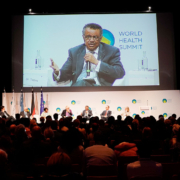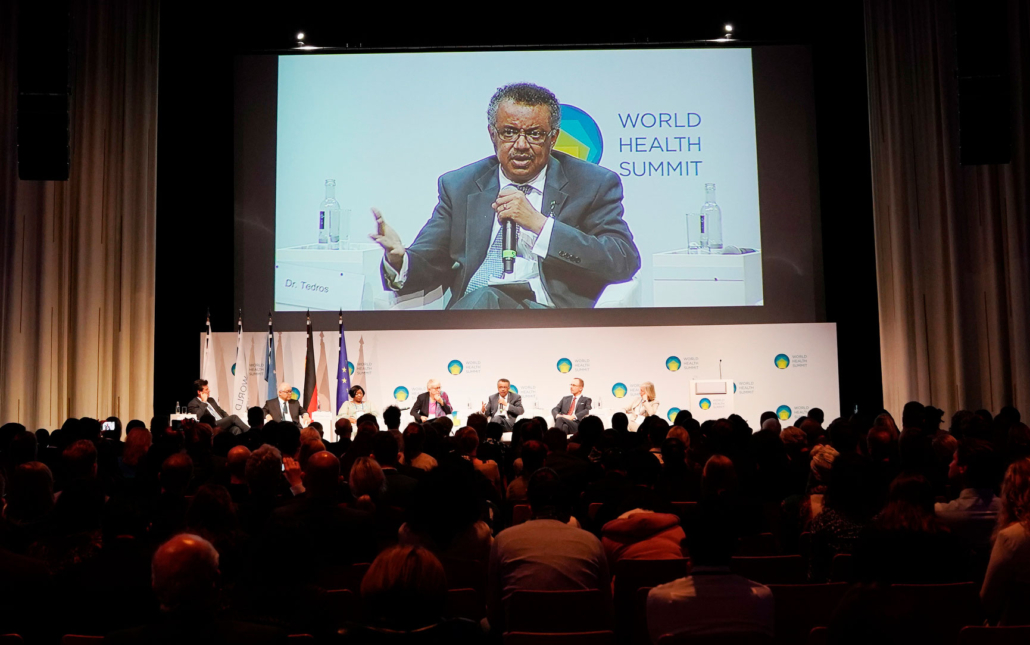When will pandemic end? WHO Director-General provides answers at World Health Summit
Dr Tedros Adhanom Ghebreyesus, addressed the World Health Summit in Berlin on 24 October. This is what he had to say:
More than a decade ago, I was invited to be part of a group with an exciting new idea – an idea to bring together leaders from research, medicine, government, industry and global health, to ask the big questions and, hopefully, to make some progress towards big answers.
That first World Health Summit, in 2009, was held in the immediate aftermath of the global financial crisis, and in the shadow of the H1N1 pandemic.
In the 12 years since then, the World Health Summit has become a landmark on the global health calendar.
That’s why, together with Professor Axel Pries, we have decided to join forces to organize a joint World Health Summit in October 2022, to engage an even broader group of actors, committed to multilateral action for global health.
12 years since the first World Health Summit, we meet once again in the shadow of a pandemic.
And we are faced once again with some very big questions: some of the same ones we were asking in 2009 that remain unanswered, and some new ones.
When will the pandemic end?
One of the questions I am asked most often is: when will the pandemic end?
My answer is that the pandemic will end when the world chooses to end it. It’s in our hands.
We have all the tools we need: effective public health tools, and effective medical tools.
But the world has not used those tools well.
With almost 50 thousand deaths a week, the pandemic is far from over – and that’s just the reported deaths.
As you know, we have set a target to vaccinate 40% of the population of every country by the end of this year.
That target is reachable, but only if the countries and companies that control supply match their statements with actions – right now.
The barrier is not production. The barriers are politics and profit.
It’s clear what needs to happen:
The countries that have already reached the 40% target – including all G20 countries – must give their place in the vaccine delivery queue to COVAX and the African Vaccines Acquisition Trust, or AVAT;
The G20 countries must fulfil their dose-sharing commitments immediately;
Manufacturers must prioritize and fulfil their contracts with COVAX and AVAT as a matter of urgency, and be far more transparent about what is going where.
And they must share know-how, technology and licences, and waive intellectual property rights.
We’re not asking for charity; we’re calling for a common-sense investment in the global recovery.
How will we prevent this happening again?
The second major question the pandemic is asking us is, how will we prevent this happening again? How do we make the world safer?
In its first report in 2019, the Global Preparedness Monitoring Board warned that the world was unprepared for a pandemic, just months before COVID-19 struck.
We welcome the GPMB’s latest report, which will be launched on Tuesday, and its recommendations.
Allow me to offer four answers; four areas in which the global health architecture must be strengthened.
First, governance
For the past 20 years, the response to every crisis or health threat has been to create a new institution or mechanism, with new governance structures, and new funding needs.
The result is a global health architecture that is complex and fragmented.
That’s why we believe the time has come for a legally-binding international agreement on pandemic preparedness and response, which will be the focus of next month’s Special Session of the World Health Assembly.
Second, financing
Cycles of panic and neglect have created a financing ecosystem that is insufficient, inefficient and inequitable.
It’s clear that we need a substantial increase in funding for national and global preparedness and response.
Crucially, any new financing facilities must be built using existing financial institutions, rather than creating new ones that further fragment the global health architecture.
More broadly, it’s clear that we need a new narrative for the way health is financed, which is why earlier this year we established the Council on the Economics of Health for All, led by Professor Mariana Mazzucato. We look forward to the launch of its second policy brief on Tuesday.
Third, systems and tools
COVID-19 has exposed serious gaps in the global ability to prepare for, prevent, detect and respond rapidly to outbreaks with epidemic and pandemic potential.
We need new tools, across the One Health spectrum.
WHO has already taken steps to build some of those tools, including the new Hub for Epidemic and Pandemic Intelligence here in Berlin, which I had the honour to open with Chancellor Merkel last month.
Last month, I also had the honour of joining President Macron to break ground on the new WHO Academy in Lyon, which will be a state-of-the-art school, using cutting edge technologies to support lifelong learning for health workers and public health professionals around the world.
Other initiatives are in development.
And fourth, WHO itself
Beyond the response to COVID-19, WHO continues to respond to dozens of other emergencies around the world, to support countries to address the burden of communicable and noncommunicable diseases, and to address the social, economic and environmental determinants of health.
Earlier this month, we recommended broad use of the world’s first malaria vaccine, a new tool against an old disease that could save millions of lives;
On polio, only two cases have been reported in Afghanistan and Pakistan so far this year, the lowest in history, and no case has been reported for nine months.
Last month, I had the opportunity to visit Afghanistan, and I’m pleased that house-to-house vaccination will shortly resume for the first time in three years, bringing us closer than ever to our dream of a polio-free world.
On NCDs, in 2019, we reached agreement with 11 of the world’s biggest food companies to eliminate industrially produced trans-fats from the global food supply by 2023, and most companies say they have already achieved this goal. We have also launched a programme to certify countries that have eliminated trans fats from their national food supply.
On childhood cancer, we are now actively supporting 50 countries, providing medicines in conflict settings like Yemen and Syria, almost doubling the health workforce in some countries, supporting the construction of new cancer centres and the development of legislation to guarantee access to care for children with cancer throughout their lifetime.
On climate change, we’re supporting 14 countries, especially small island developing states, with investments at country level for climate-resilient and environmentally sustainable health facilities.
And day by day, we continue to support countries to strengthen their health systems, especially primary health care, on their journey towards universal health coverage.
This is the unglamorous but indispensable work that only WHO can do.
It has often been said that if WHO didn’t exist, it would have to be created.
A unique global mandate
With 194 Member States and 152 country offices, WHO has a unique global mandate, unique global reach and unique global legitimacy.
But over several decades, it has been progressively weakened by a debilitating imbalance between assessed contributions, which currently account for just 16% of our budget, and voluntary, earmarked contributions, which now account for 84%.
This imbalance distorts our budget and constrains our ability to deliver what our Member States expect of us. Redressing it is vital if WHO is to be the independent and authoritative global health leader the world needs it to be.
Frankly, the world doesn’t need another structure or institution;
It needs a strengthened, empowered and sustainably financed WHO at the centre of the global health architecture.
Let leave you with three specific requests:
First, we must end this pandemic, by pulling out all the stops to reach our target of vaccinating 40% of the population of every country by the end of this year.
Second, we must prevent the next pandemic, with better governance, financing, systems and tools, and by strengthening WHO.
And third, all countries must invest in primary health care as the foundation of universal health coverage.
The pandemic has demonstrated beyond doubt that health is not a luxury for the rich, or simply an outcome of development; it’s a fundamental human right, and the basis of social, economic and political stability.
There’s only one way to achieve these three things – and that’s together.
No country can end the pandemic in isolation from the rest of the world;
And no country can protect the health of its own people without working to protect the health of all people.
It takes some tough negotiations and some tough decisions. But the reward is a world that is healthier, safer and fairer for all of us.



